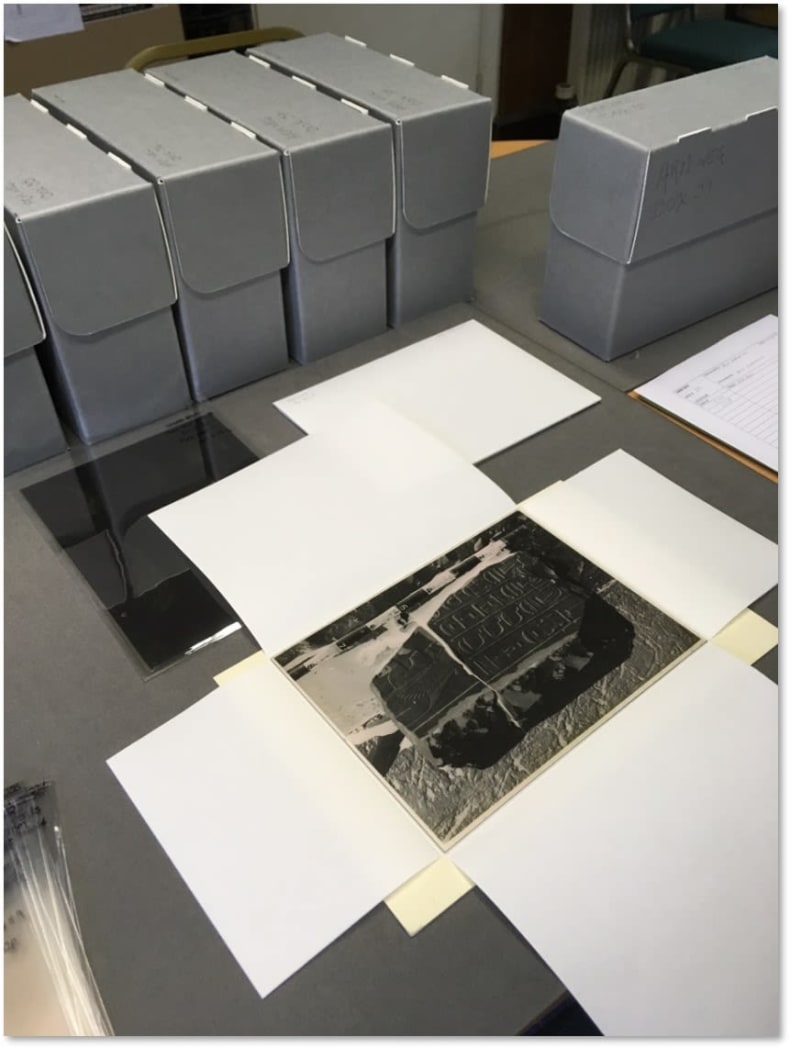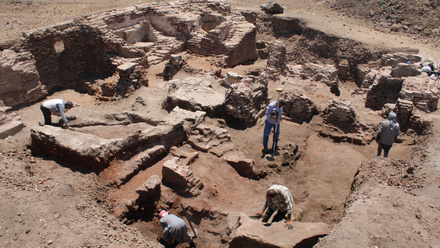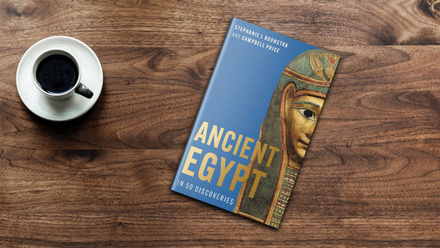The Rehousing Process
by Alix Robinson
After raising £25,000 from generous donors and a grant from the Friends of the Petrie Museum, the glass-plate rehousing project began in June 2019.
When rehousing glass plate negatives, the two most important factors are the size of the plates, and the quantity. In the case of the EES collections in need of rehousing, the plates numbered over five thousand, and the sizes varied widely, from 80 mm square (the same size as glass lantern slides) up to 250 x 300 mm rectangles.
Each plate was rehoused in a four-flap paper enclosure and placed in a box with plates of the same size. The boxes were padded with Plastazote, to provide a protected home for the plates, and the enclosures labelled with numbers and other information. If a plate is later required for study (though most have been digitised) it can easily be found. With the use of a light-table, the plate can be viewed by merely unfolding the flaps; there is no need to remove it from its enclosure.

A glass-plate from Armant (ARM.NEG.2107) in the process of rehousing.
This all results in a time-consuming rehousing process. In order to accomplish this in a timely manner, intern Archive Assistant Alix Robinson was hired to supervise the project, and a call sent out for volunteers. This resulted in the formation of two teams of volunteers, mainly composed of recent graduates in the areas of museum conservation, history and Egyptology. The project was designed to provide the volunteers with useful new skills and experience, while enabling more than five thousand negatives to be rehoused in just eighteen days, spread over two three-week sessions.
To begin with, Alix received training from a professional conservator, in all aspects of rehousing, from box-building to creating the templates for the Plastazote liners, to rehousing the plates in their enclosures. In practice, the work went more quickly than anticipated, mainly due to the enthusiasm of the volunteers. Some plates, however, required the use of further resources for identification, including existing digital copies of the negatives, published site memoirs, and lists of plates created by long-departed EES staff and excavators.


